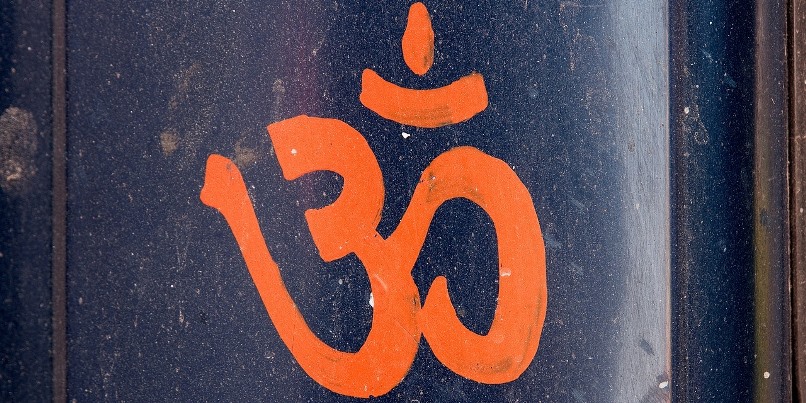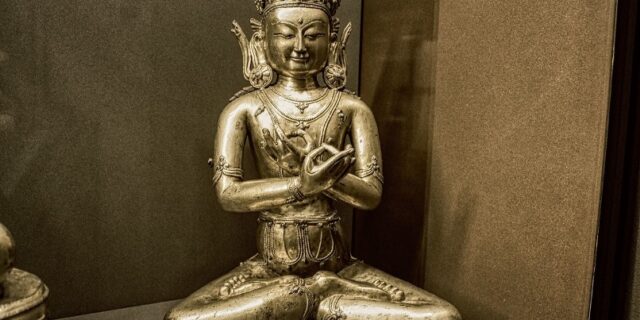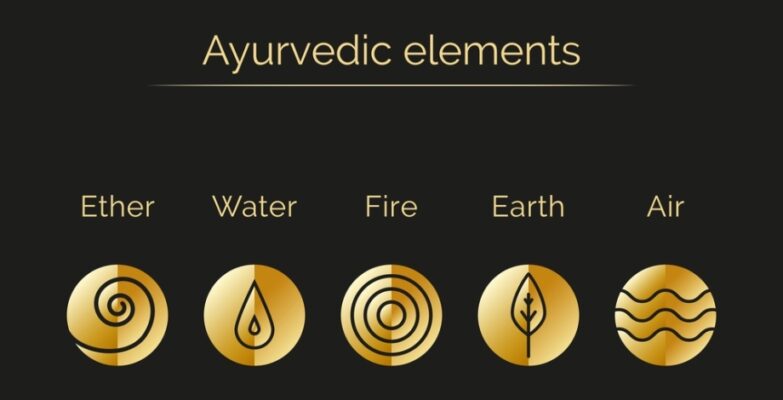
In Yoga, practitioners may use chants, prayers, songs, mantras, visualizations, and/or incantations before, during, and/or after a session.
The motives of using these tools and techniques may vary, but can include ideas of appeasing or exorcising “evil spirits,” auto-suggestion, deep relaxation, concentration, devotion, purification of body and mind, invoking healing power, or help of beneficial religious entities or saints, and such.
Sometimes these practices are rather extensive and take a large part of the session (or even the complete session time), but in other cases they can take form of a simple, brief moment of concentration or meditation, or maybe a short song or prayer before, during, or after the session.
Visualization in Yoga

Visualization practices in Yoga are usually connected to meditation. It’s often used as an aid to relax, to learn to enhance one’s concentration abilities, as an aid in Yogic exercises, or to reach a state of deep meditation.
One can think, for instance, of visualizing an object in the mind, such as the flame of a candle to focus on to practice one-pointed concentration. Another example would be to visualize the calm splashing of waves on a beach to calm the mind and come to deep relaxation and subsequently to contemplation or meditation.
Another common use is to visualize the pathways of the Yoga Nadis and the breath or Prana flowing through them, or the locations of the Chakras along the Sushumna Nadi and the Prana that is directed into them.
The above are just examples. Visualization can also include events, persons, or goals, among other things, certainly not only material phenomena or objects. Neither is meditation the only goal; for instance, simply wanting to relax or relieve stress can be aims to use visualization techniques.
Chants in Yoga
Chants are generally rhythmical, rather monotonous repetitions said aloud or only mentally in the form of a song, utterance, prayer, name, sound, sentence, or word. Chanting is also connected to doing so-called Japa, which is the more formal name of a meditative repetition of a mantra or a Divine Name.

In Yoga, chanting is used to deepen one’s concentration, to calm and still the mind, open the heart, and improve awareness of the current moment. It’s also used as a devotional tool called Kirtan (usually aided by musical instruments) to pay respects or invoke blessings of divine spirits, energies, or Gurus, and such.
Maybe the best known chant or mantra is the word Om (Aum), which is seen as the most supreme and sacred sound and represents the creation of the universe, emanated as a result of the first “breath” of the Divine Creative Energy or God (which sounds like Aum). Mind that, apart from how Aum may sound, there are many other interpretations of the meaning of the word Aum.
Additionally, chanting (or sound) is considered a healing technique due to its vibrations. It’s thought that specific sounds create beneficial vibrations which can stimulate or open the Chakras, and cleanse or heal body tissues and organs, among other benefits. The use of the Tibetan Singing Bowl is perhaps one of the most well-known applications.
Incantations in Yoga
An incantation is a magical spell, prayer, or chant used for various reasons, such as for protection, for good luck, to create merit, to invoke help from divine spirits or saints, or to generate special powers.
Their use can be found notably in Tantra Yoga practices, but incantations are also used widely in many other types of Yoga or even in massage and other healing modalities of traditional medicine systems.
















